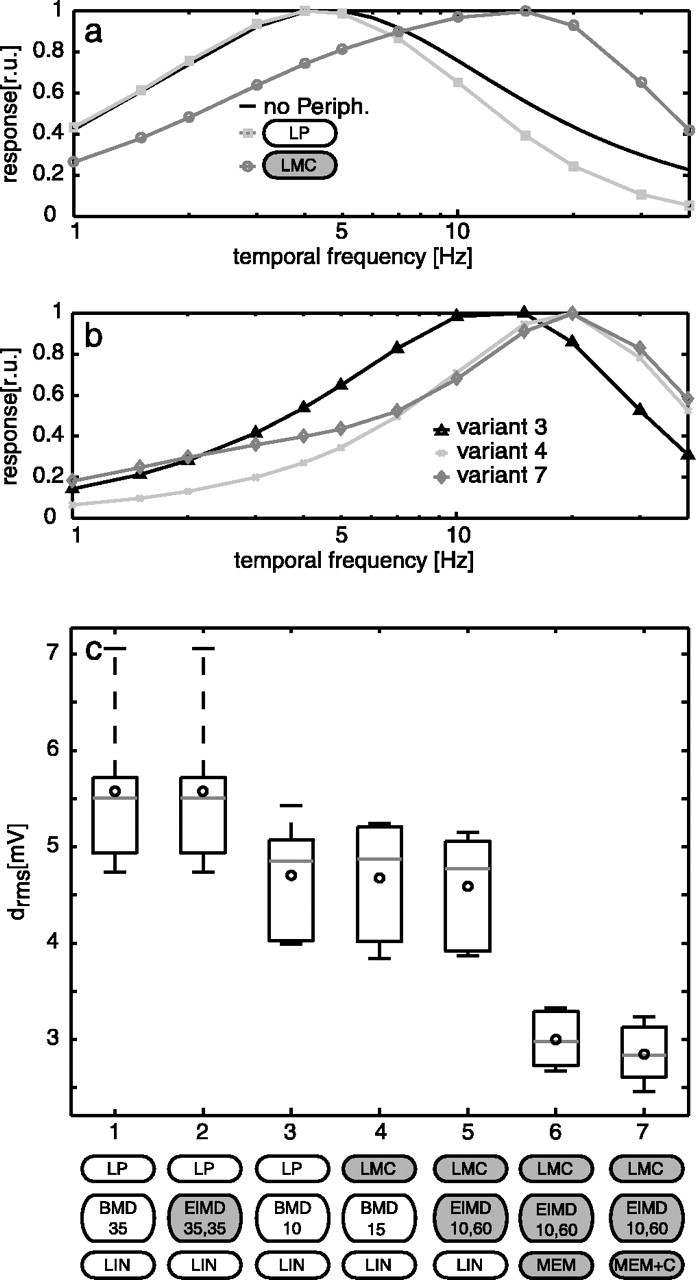Figure 4.

Responses of the model of the blowfly visual motion pathway to constant velocity motion and to behaviorally generated optic flow. a, The theoretical steady-state tuning for constant velocity motion of the BMD without peripheral (Periph.) elements (black line), with a peripheral low-pass filter in the input line of the movement detector (LP; dark gray squares) and the LMC kernel (light gray circles). b, The steady-state tuning of optimal parameterized model variant 3 (black triangles), variant 4 (dark gray crosses), and variant 7 (light gray diamonds). c, Box-and-whisker plots of average differences between the neuronal and the model responses for the various variants of the model. The variants [using the labels from Fig. 1, extended by the parameter(s) for the motion detector time constant(s)] shown are as follows: (1) LP-BMD-LIN; (2) LP-ElMD-LIN, parameters match the steady-state tuning of the cell, same time constant for the motion detector low-pass and high-pass filters (τlp = 35 ms, τhp = 35 ms); (3) LP-BMD-LIN (τlp = 10 ms); (4) LMC-BMD-LIN (τlp = 15 ms); (5) LMC-ElMD-LIN, different time constants of motion detector low-pass and high-pass filter (τlp = 10 ms, τhp = 60 ms); (6) LMC-ElMD-MEM; (7)LMC-ElMD-MEM+C. For each variant, the circle indicates the mean, the gray horizontal lines within the boxes show the median, the box includes the upper and lower quartiles, and whiskers denote maximum and minimum drms of the responses to six stimuli. r.u., Relative units.
